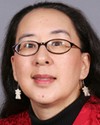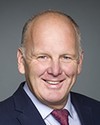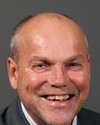Yes, it's shown in my presentation in those three bubbles.
Looking at the data, less than 5% of the growth in the urban aboriginal population is driven by migration. The rest is due to fertility--which we know is not 10 children per woman--and changes in self-identification.
In the western provinces, Winnipeg in particular, we've seen huge increases in self-identification. We're going to do a much more detailed analysis of the migration patterns for a city like Winnipeg and show, in a nutshell, that all of a sudden a population appears in Winnipeg, but they were already residents of Winnipeg. That goes along the same direction of what the chair was saying earlier about pride in self-identification. Those individuals who all of a sudden have this pride are those from mixed parentage, with a first nation mother and a non-first nation father. They were raised in both cultures. All of a sudden it's okay to say they're first nation, so they self-declare. It's the same thing for a person who belongs to the Inuit community or a person who is Métis. It's self-identification.



